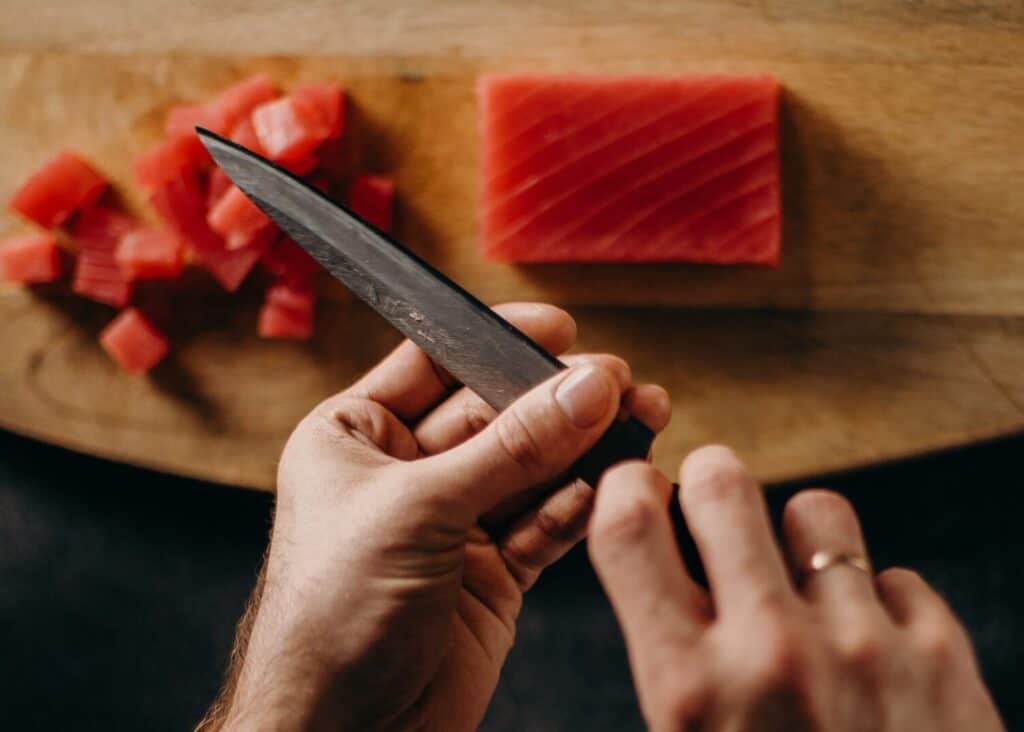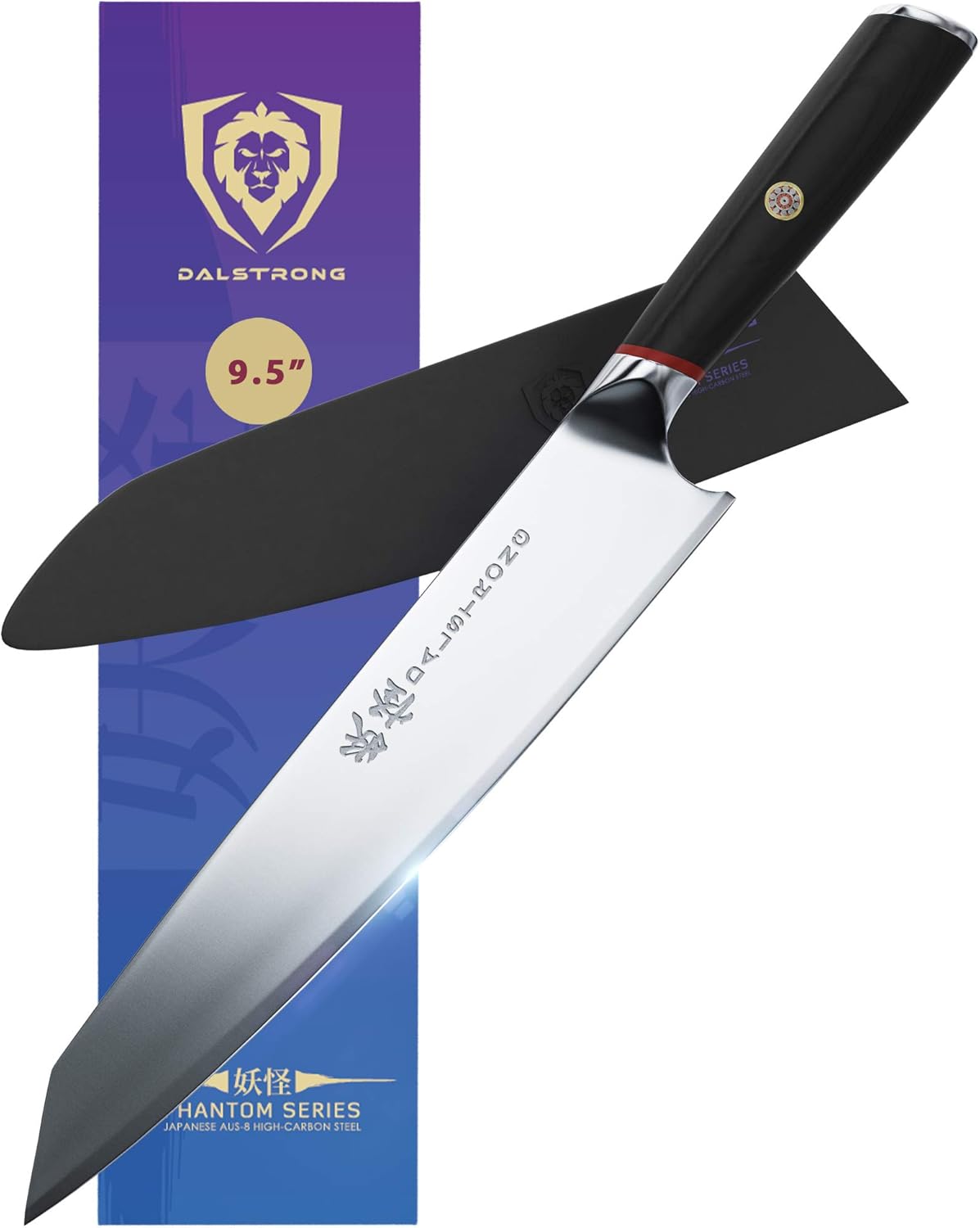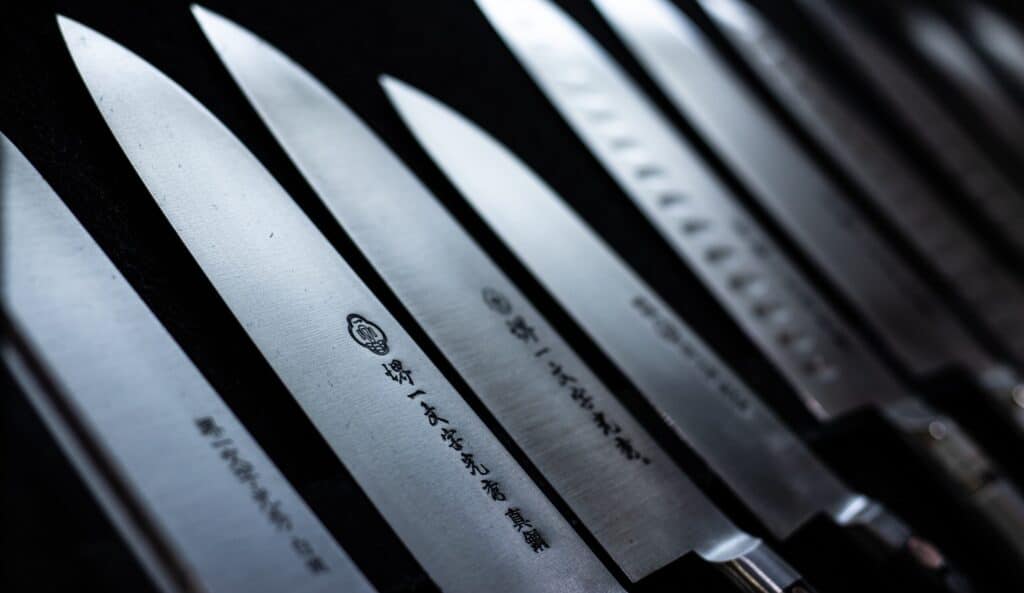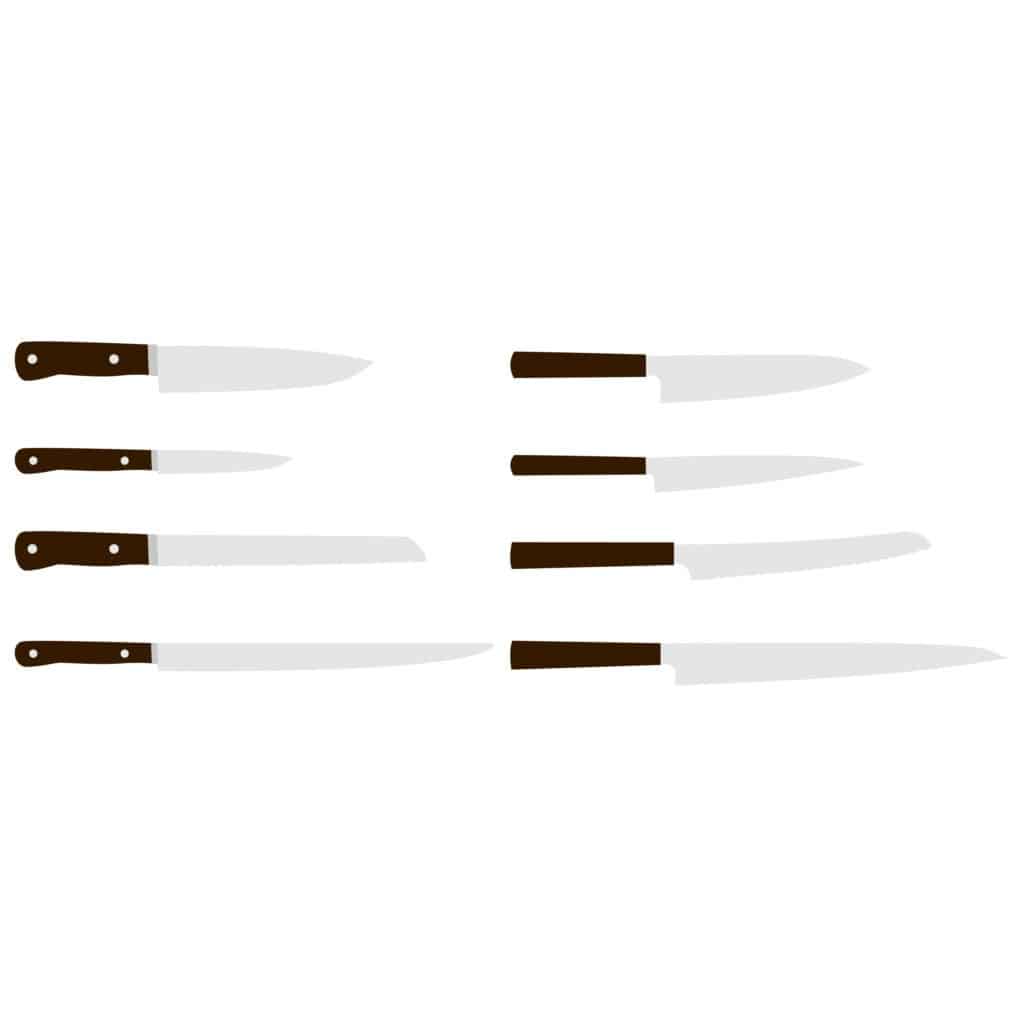
In the western world we’re used to knives with a double bevel. In fact, you’d be hard pressed to find a knife without one (except serrated knives).
However, single bevel knives are beginning to become more common, mainly due to the increasing influences of traditional Japanese knife styles in western knife design.
One of those styles is a single bevel knife. But why are single bevel knives so popular in Japanese knife design? And are there benefits to a single bevel that you might be missing out on?
In the articleI’m going to look at the pros and cons of a single bevel and double bevel knife. Hopefully it’ll help you to decide which is best for your needs.
Single bevel pros and cons
| Pros | Cons |
| Sharper | Less durable |
| More precise cuts | Less versatile |
| Easier to sharpen |
The difference between single and double bevel knives
Design
The bevel refers to the angled edge of the knife. When a knife has a double bevel it means the blade has two angles merging together to form the edge.
When a knife has a single bevel blade it means one side of the blade remains straight right to the edge, whilst the opposite side has an angle.
Sharpness
The most important difference that having a single bevel edge makes is that they are sharper.
That’s because a single bevel edge usually has a more acute angle, single bevel Japanese knives typically have an angle of 12 – 15 degrees.
As both sides of a double beveled edge have their own angle, they generally tend to have a total angle of around 20 degrees.
The angle of double bevel western knives has begun to decrease recently as technologies advance, but generally speaking you will still get a smaller angle, and thus a sharper knife, with a single bevel edge.
Precision
With this increased sharpness comes increased precision.
The super sharp blade of a single bevel knife can slice through food with extreme precision.
This not only has the benefit of allowing chef’s to slice very thin cuts, but it’s also better for the flavor of the food.
The sharper the knife the more it can slice through food rather than tear through. Double bevel blades tear through food to a greater extent which can actually affect the flavor.
That’s one reason why single bevel knives are so popular with sushi makers. The delicate flavors of the raw fish and other raw ingredients are much better preserved when sliced through with a single bevel edge.
Durability
Since the blade is so much sharper single bevel edges might seem like a no-brainer, but there is a good reason many western knives opt for a double bevel.
Generally speaking, double bevel edges are more durable, they sacrifice sharpeniss for durability.
That because the thinner the blade becomes, the more susceptible it will be to chipping along the edge.
Therefore, the super sharp, and super thin edges of single bevel blades can be more likely to chip. Single bevel blades are generally not suitable for use on any food containing hard bits. That’s things like fruit with stone (like avocados) or meat that still contains bones.
For these kinds of jobs double bevel knives are generally the best choice as they are unlikely to chip from hitting a bone.
Sharpening
This is often cited as one of the main benefits of single bevel edges, but personally for me I don’t think it should make a huge amount of difference to whether you should get a single bevel edge knife or not.
But it is a factor, so here’s the theory.
Single there is only one angled edge, single bevel knives are generally easier to sharpen. You don’t need to worry about getting each edge spot on and con just focus on getting the perfect edge on one side.
Whilst that’s undoubtedly true, knives only really need to be sharpened relatively infrequently. Perhaps every 3-6 months, and that’s if you use that particular knife quite often.
So saving yourself 5 to 10 minutes every 6 months just because sharpening is a little easier isn’t really a factor I think of as very important; but hey, it is still a factor.
Are single bevel knives good?
In one word, yes. Single bevel knives allow the user to cut extremely precise slices and offer a knife edge with a sharpness that’s difficult to equal with a double bevel knife.
Having said that, single bevel knives aren’t for everyone. If you’re looking for durability, or a general use knife, you would be better off using a double bevel chef’s knife or something similar.
However; if you are interested in venturing into the world of knives for specific styles and love Japanese design then a single bevel knife could be a great choice for you. They are perfect for cutting fruit, vegetables, raw fish and are especially popular with sushi chefs.
My single bevel knife recommendation
If you’re interested in a single bevel, Japanese style knife then I would highly recommend this incredible Gyuto by Yoshihiro.
It’s absolutely stunning with a blade made from 46 layers of Damascus steel with a VG-10 Core.
Yoshihiro are one of the best names in traditional Japanese knives and this one certainly will not disappoint.

View the Yoshihiro knife on Amazon (opens new tab)
Alternatively, for a slightly more ‘light on your pocket’ alternative, this 9.5 inch chef’s knife from the Dalstrong Phantom Series is a seriously quality piece of kit.
Dalstrong has a range of top quality knives and it’s a brand I feature a lot on this site. This is a beauty of a single bevel edge knife and is quite frankly a bargain for the price.
You’ll also notice the curved, concave style of the blade heel, where it meets the handle. That’s a great feature for those not used to single bevel edges as it will help keep your fingers away from the razor sharp edge!


